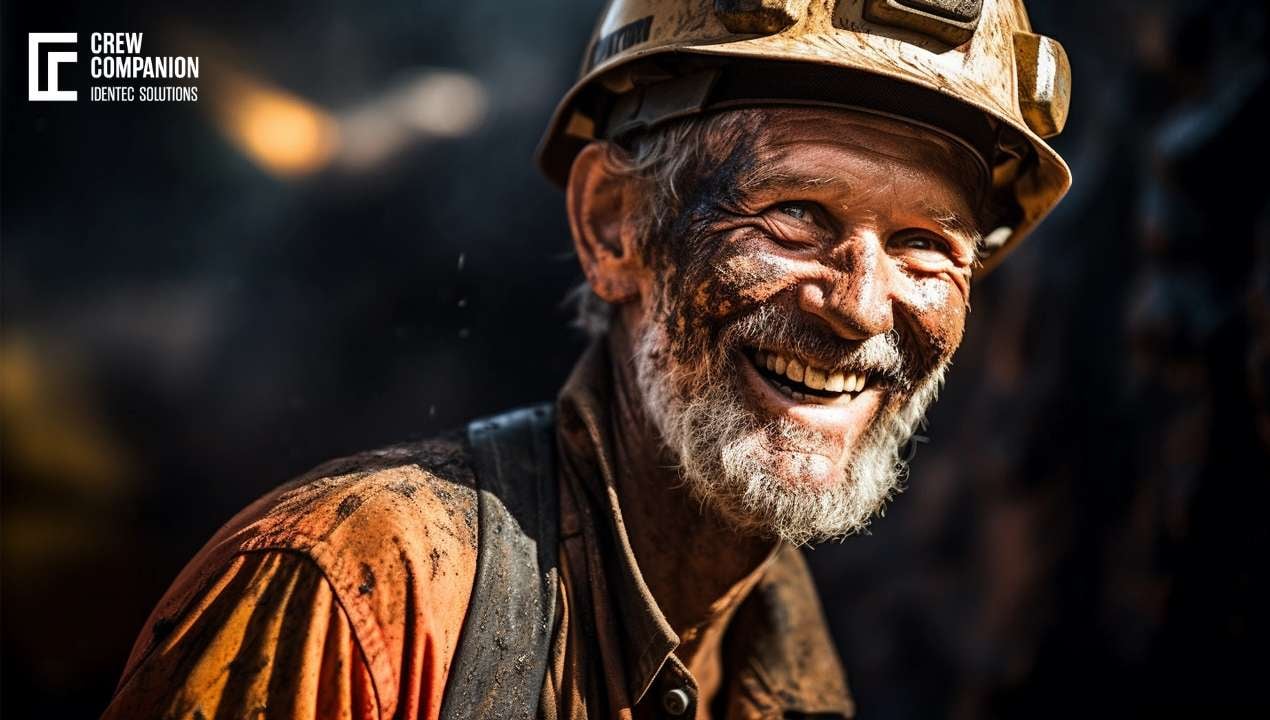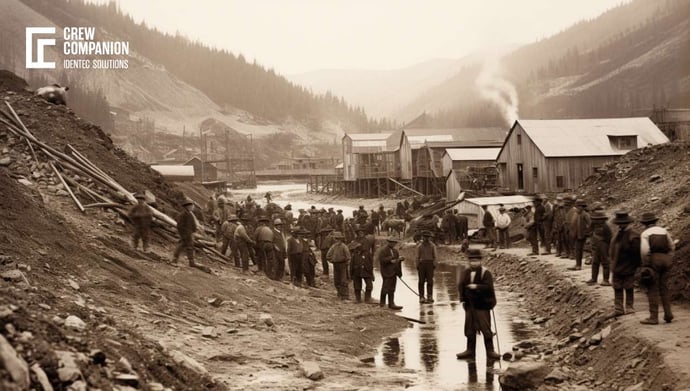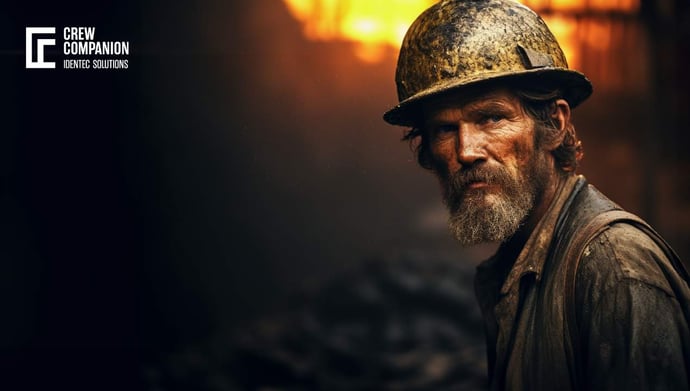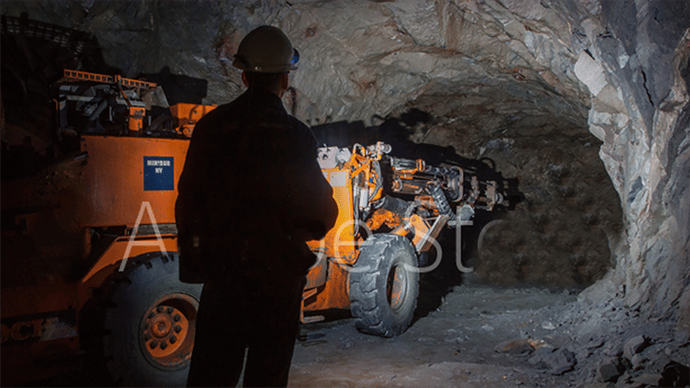Mining Industry of Australia - Part 1
| Written by Michal Wozniakowski-Zehenter

No video selected
Select a video type in the sidebar.
During 2019, Australia ranked second in gold, manganese, and lead, third in zinc, cobalt, and uranium, and first in iron ore and bauxite. Australia was also famous for its salt, copper, nickel, silver, tin, phosphate, sulfur, and precious stones. The non-renewable energy sector was also big for the Down Under. The mining industry in Australia produced opals, diamonds, rubies, sapphires, and jade. The country exported 351.1 thousand barrels of oil per day in 2020, making it the 30th largest oil producer. With a production of 67.2 billion cubic meters in 2015, the country ranked 12th globally in terms of oil consumption and imports. Coal exports ranked fourth globally in 2018, and coal consumption, exports, and production were all big.
Mining Industry in Australia: The Beginning
In 1851, gold was found in New South Wales and sparked a profound change. When gold was discovered, news spread fast, leading to the Australian Gold Rush. Prospectors, known as "diggers," flocked to Australia from all over the world. It not only spurred economic growth but also shaped Australia's culture and demographics. The Gold Rush made towns like Ballarat and Bendigo boom overnight as thousands descended upon them. Even though the Gold Rush era was filled with optimism and adventure, it wasn't without its challenges. Australia's Gold Rush propelled it to the global stage, establishing its reputation as a land with great natural resources despite overcrowding, scarce resources, and harsh conditions.
While gold was the most glamorous mineral mined, other mining sectors also saw growth. Tin mining in Tasmania began in the 1870s. Tin was found at Mount Bischoff and Renison Bell, contributing a lot to the economy of Tasmania and establishing the island as a mining powerhouse. There was also a lot of copper mining happening during this time. During the 20th century, South Australia became a hub for copper mining. Kapunda and Burra were the earliest metal mines in Australia and played a huge role in the country's economic development. By proving mining goes beyond gold, these mines encouraged exploration and investment in other minerals.
The mining boom of the 19th century led to rapid economic growth and significantly contributed to the development of infrastructure like roads, railways, and ports. As a result of the Gold Rush, Australia became more multicultural, and its national identity was shaped. It also contributed to the political push towards federation. The need for coordinated intercolonial policies, particularly concerning immigration and trade, laid the groundwork for the eventual federation of Australia in 1901. Mine Technology development also exploded during this time. Gold panning became more efficient and productive as more sophisticated techniques and equipment were introduced, like the cradle and puddling machine. These advancements were also seen in other mining areas, like copper and tin.
20th Century Developments
A lot of changes happened in Australian mining in the 20th century. The mining industry entered a new phase after the Federation in 1901, building on the foundations laid in the 19th. A lot of mining operations consolidated, and major mining companies emerged in the early 20th century, affecting the nation's economy and global standing. Infrastructural investments, like railways and ports, helped mining grow.
During World War I and II, the demand for Australian minerals surged. Mining made vital war materials like iron, steel, and coal. As a result, existing mines were expanded as well as new ones were opened. After World War II, global reconstruction efforts, especially in Europe and Japan, made Australian minerals more desirable, increasing efficiency and output. During this time, Australia and Japan started trading coal and iron ore, especially (learn more about underground safety).
The discovery and subsequent development of massive iron ore reserves in the Pilbara region of Western Australia in the 1960s was a landmark event. In 1960, after the iron ore embargo was lifted, Australian ore could sell internationally. In turn, significant investments were made in mine infrastructure, including railways and ports, which allowed for large exports. During this time, Australia became a major global supplier of iron ore, not just because it dominated Australia's mining exports. Coal mining grew during the 20th century, especially in Queensland and New South Wales. As demand for thermal coal and metallurgical coal grew, coal became one of the top export commodities. Coal mining has made a big contribution to Australia's economy by contributing to energy, jobs, and regional development.
A few major uranium deposits were discovered and developed in North and South Australia, including Ranger and Olympic Dam in the seventies and eighties of the last century. As the nuclear age arrived in Australia, uranium became a big commodity. Australia has one of the biggest uranium reserves in the world. As the 20th century progressed, awareness of mining's environmental and social impacts increased. As mining practices became more sustainable and environmental regulations tightened, land degradation, water pollution, and displacement of indigenous communities increased.

Where do you find mining in Australia?
There are as many mines in Australia as there are regions, and each region has its unique treasures. In Western Australia, iron ore occurs in the Pilbara Region. The Pilbara is home to some huge operations like Mount Tom Price and Newman, which are run by Rio Tinto and BHP. The Pilbara also has natural gas, especially on the North West Shelf. In Western Australia, they're digging up gold and nickel down in the Goldfields-Esperance Region. Getting to Kalgoorlie is like hitting the jackpot - it's one of the richest gold deposits anywhere. And don't forget about the Kimberley Region, which has diamond mines. If you've ever seen a pink diamond, it probably came from the Argyle mine.
Among Queensland's mining highlights is the Bowen Basin, which has plenty of top-notch coking coal and tons of thermal coal. There's Mount Isa, which is an absolute giant of copper, lead, zinc, and silver. But Queensland also got a bit of controversy with Surat and Galilee Basins, mostly because of their close ties to the Great Barrier Reef and environmental concerns. In New South Wales, the Hunter Valley is the old guard of coal mining, mostly exporting thermal coal. You can't talk about mining in New South Wales without talking about Broken Hill. Lead, zinc, and silver are legendary here. The Olympic Dam near Roxby Downs is a big deal in South Australia. It is rich in copper, gold, uranium, and silver and is run by BHP. Iron ore, gold, and copper could be found in the Gawler Craton.
With the Renison Bell tin mine and Savage River iron ore mine standing out, Tasmania has a mining history of its own. Beaconsfield is famous for its gold mine, which dates back to the early 1900s and was also the site of a nail-biting rescue operation in 2006. Then there's the Northern Territory, which adds a different flavour to Australia's mining. It's one of the major uranium sources in Kakadu National Park, but it's been the subject of environmental debates and indigenous rights concerns. The Tanami Desert's got you covered if you're into gold, with the Tanami Mine being one of the biggest gold producers in Australia. With all these regions, Australia is a huge mining powerhouse with iron ore, coal, gold, and diamonds. Australian mining's reputation is shaped by each of these areas.
What is the economic impact of The Mining Industry of AustraliA?
Among Australia's biggest economies is the mining industry, but that's not all. The Australian Gross Domestic Product (GDP) grew over 15% by 2022, reflecting both its direct economic inputs and its impact on supporting industries like logistics and equipment. This industry makes a lot of money for the country. Natural gas, iron ore, and coal are Australia's main exports, and China, Japan, South Korea, and India are its biggest buyers.
Mining fortunes often correlate with Australian dollar value. High commodity prices usually boost the dollar by raising the international price of Australian goods and services. It's good for exporters but can also hurt tourism and manufacturing. Global commodity prices affect Australian economies directly. More mining revenue means more government revenue, so more taxes, royalties, and public spending. A dip in prices can also mean lower company incomes, job cuts, and lower government revenues, which affect public services and infrastructure. A lot of Australian regions were built by mining, especially remote and rural ones. Their reliance on mining means they are vulnerable to fluctuations in the mining industry, impacting their stability and prosperity.
Investments are indeed needed in the rare earth supply chain, as these minerals are difficult to find, extract, and process. The Minister for Resources of Australia highlighted the necessity of government support to mitigate the risks associated with rare earth mining and to attract private capital, especially given Australia's significant deposits in the Northern Territory and Western Australia.
In an interview with David Lipson for ABC AM (1), the Minister stated, “Rare earth supply chains are at risk around the world because these rare earths are hard to find and they're hard to extract and process. Australia has large deposits of these right around the country particularly in the Northern Territory and in Western Australia. What we find is because of the thin markets for these things and really low volumes, which is not what we're used to in the mining industry in Australia, we're used to really high-volume commodities like coal and iron ore. So rare earths are different; they are riskier, and they need government support to make sure they get started and draw in that private capital. But I must say companies like Arafura, in the announcement today, have sought their own private capital to go into these projects. But we need government support to ensure we can get this industry off the ground. (…) Well, the main consideration is that we compete on the world stage with our natural resources. So, whilst there are always concerns around national security for so many things that we can do in this country, principally, this is about competition. For too long, we have sent some of our raw minerals out to be processed in a competitor nation, but now we believe, and the Anthony Albanese Government believes, we should do more of that here. So that's why we are putting together over an $800 million package to make sure that Arafura can establish an integrated rare earths refinery in the NT, and that's going to process these really important rare earths further along the value chain than any other capability in this country. So whilst those rare earths will go to defence applications, absolutely, and it's very important for that, they'll also be used in electric vehicles and in really super strong magnets for wind turbines and other green technology. So they'll be used for a wide array of things, but really importantly, Australia just needs to be using its minerals and processing them here for ourselves as a nation to be able to make more things, as well as for our international partners.”
FAQS
How big is the Mining Industry of Australia?
In 2020, mining represented the largest sector in Australia in terms of its contribution to the country's Gross Domestic Product (GDP), accounting for 10.4%. This marks a significant increase from just 2.6% in 1950 and slightly above the 10% recorded at the time of Australia's federation in 1901. Additionally, in the same year, mineral exports played a crucial role in Australia's economy, comprising 62% of the nation's total export earnings, amounting to $270 billion.
What is mostly mined in Australia?
Australia ranks among the top global producers of several key minerals, including bauxite (used for aluminium), iron ore, lithium, gold, lead, diamonds, rare earth elements, uranium, and zinc. Additionally, the country is home to significant deposits of mineral sands such as ilmenite, zircon, and rutile.
TAKEAWAY
Besides being an industry, the mining industry is Australia's economic backbone and essence. Since the gold rush of the 1850s, mining has driven economic prosperity, population growth, and technological progress. With its substantial contributions to Australia's GDP, status as the top export sector, and influence on the Australian dollar, it's an important economic sector. There's no doubt mining has shaped economies in remote and rural areas, but their stability is closely linked to the industry's ups and downs. From the historical complexities of the Gold Rush to today's issues of sustainability and indigenous rights, Australian mining's narrative is deeply intertwined with both environmental and social themes. This sector has been a major source of income and employment in Australia for many years, deeply ingrained in its cultural and economic tapestry. The story of mining in Australia is rich and diverse, reflecting themes of growth, resilience, and adaptation. Australian mining has been influenced by every region, from the iron-rich Pilbara to the diamond-rich Kimberley. Mining in Australia is synonymous with natural abundance and a pioneering spirit, reflecting the country's transformation from a remote colony to a major international player. Australian mining is poised to keep on evolving in an ever-changing world, facing new challenges and seizing opportunities so that it remains a central part of the nation's story. Continue reading about the mining industry in Australia - Part 2.
Delve deeper into one of our core topics: Miner Safety
Glossary
Lithium is a crucial element in clean energy technologies, powering electric vehicles (EVs) and large-scale batteries used for electricity storage. Although abundant, lithium must be extracted and processed before use. Currently, there are two primary methods for lithium extraction. Traditionally, most lithium was sourced from Chile, where it is extracted from brines—salty underground or surface liquids. The liquid is pumped out and left in evaporation pools, leaving behind lithium and other elements.
In Australia, now the world’s leading lithium producer, extracts lithium from hard rock mining. Companies blast spodumene, a lithium-rich mineral, from open pits. Today, Australia supplies around half of the world's lithium, with more than 80% of its spodumene rock being shipped to China for further processing. As demand for lithium grows, sustainable extraction and refining processes will be critical for meeting global energy needs while minimizing environmental impact. (3)
Sources:
(1) https://minister.infrastructure.gov.au/m-king/interview/transcript-interview-abc-am
(2) https://minerals.org.au/resources/mining-continues-to-underpin-the-australian-economy/
(3) https://climate.mit.edu/ask-mit/how-lithium-mined
Note: This article was updated on the 11th of February 2025

Author
Michal Wozniakowski-Zehenter, Marketing Manager
Michal Wozniakowski-Zehenter is an experienced marketing and project management professional. He spent most of his career on projects with a strong focus on digital marketing and event management. He is a very active voice representing offshore and mining industries through social media channels. Michal writes mainly about offshore oil and gas, renewable energy, mining and tunnelling. Compiling and sharing the knowledge within industries is one of his goals.




